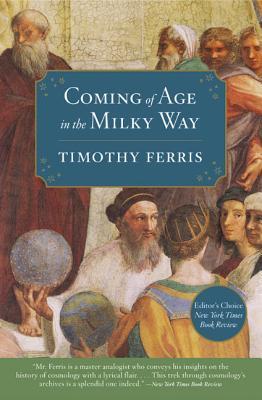
A Brief History of Everything
Book Description
What if the answer to life’s biggest questions lies in the convergence of science, philosophy, and spirituality? In 'A Brief History of Everything,' Ken Wilber embarks on an exhilarating quest to unravel the fabric of existence itself. With a sweeping narrative that connects ancient wisdom to modern discoveries, he challenges the boundaries of human understanding and invites readers to explore the profound interplay of consciousness and reality. Each page beckons with transformative insights, igniting a spark of curiosity that could change everything. Can one book truly unveil the mysteries of the cosmos and the inner self?
Quick Book Summary
"A Brief History of Everything" by Ken Wilber presents a sweeping synthesis of knowledge, traversing science, philosophy, psychology, spirituality, and religion to offer a comprehensive picture of existence. Wilber weaves together insights from both Eastern and Western traditions to construct his "Integral Theory," a model aiming to explain how all aspects of life, from matter to consciousness, are interconnected. The book explores humanity’s evolution—biological, cultural, and spiritual—while challenging dualistic thinking and emphasizing the unity underlying apparent opposites. Wilber's narrative invites readers to reconsider their views on reality, the self, society, and the cosmos, providing tools to foster personal development and collective transformation. The result is an engaging, thought-provoking journey that seeks to reconcile timeless spiritual wisdom with cutting-edge scientific discoveries.
Summary of Key Ideas
Table of Contents
The Evolution of Consciousness
Ken Wilber’s "A Brief History of Everything" begins by exploring the evolution of consciousness across history, from the material foundation of the cosmos to the emergence of life and complex human societies. Wilber traces the unfolding of existence through distinct stages or levels, exemplified by matter, life, mind, and spirit, emphasizing how each stage transcends yet includes its predecessor. This perspective challenges reductionist approaches, arguing instead for a holistic view that recognizes the interconnectedness of all phenomena. The narrative foregrounds that human history can be understood as a process of expanding awareness, with each epoch bringing a deeper realization of unity and complexity.
Integral Theory and the Four Quadrants
A central contribution of the book is Wilber’s "Integral Theory," encapsulated in the concept of four quadrants: the interior and exterior of individuals and collectives. He explains that every phenomenon can be viewed from these four perspectives: subjective experience, objective behaviors, interpersonal relationships, and social systems. This multidimensional framework enables a comprehensive understanding of reality, bridging apparent divides between science, art, morality, and spirituality. Wilber emphasizes that ignoring any quadrant leads to partial or distorted insights, urging readers to adopt an integrative approach when grappling with life’s challenges and mysteries.
Reconciling Science and Spirituality
Wilber explores the longstanding tension between science and spirituality, contending that both domains offer vital, complementary truths. He critiques the materialist reductionism of modern science while also cautioning against the anti-rational tendencies of certain spiritual movements. By synthesizing empirical inquiry with experiential and contemplative knowledge, Wilber argues for a vision where science and spirituality mutually enrich, rather than contradict, one another. This reconciliation paves the way for a more nuanced, holistic account of the cosmos and our place within it.
Personal and Collective Development
The book also addresses personal and collective development, introducing the idea that individuals and societies evolve through identifiable stages. These stages, from egocentric to ethnocentric to worldcentric consciousness, are marked by increasing empathy, complexity, and inclusivity. Wilber observes that personal growth mirrors the broader trajectory of cultural advancement and that conscious engagement with this process can foster greater psychological and societal wellbeing. He offers practical guidance for cultivating integral awareness through practices such as mindfulness, dialogue, and self-inquiry.
Transcending Dualism
Finally, Wilber challenges the pervasive dualisms—self versus other, mind versus body, science versus religion—that fragment modern thought. Drawing on both mystical traditions and contemporary philosophy, he advocates for a vision of nonduality, where all opposites are seen as complementary aspects of a greater whole. By transcending dualistic thinking, individuals can access deeper wisdom and compassion, cultivating a sense of unity with themselves, others, and the cosmos. The book concludes with a call to integrate these insights for transformative action and understanding.
Download This Summary
Get a free PDF of this summary instantly — no email required.





